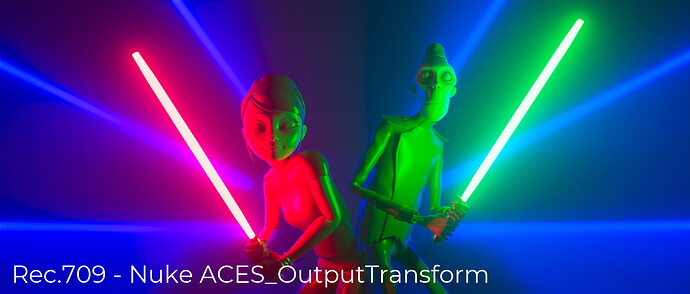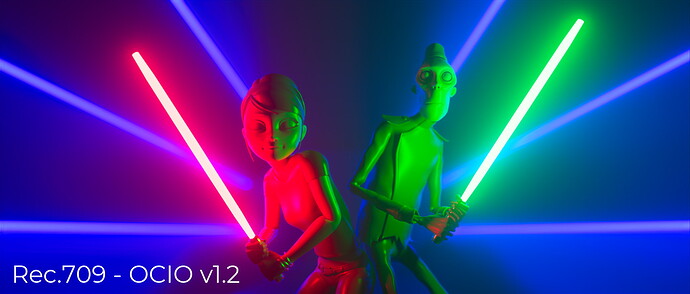Thanks @Thomas_Mansencal ! Your insight, as always, is much appreciated.
No they aren’t. It is just a really poor naming convention. They are AP0 exr files. Sorry about that.
If we have a look at the name of the file : cg_ACEScg_lightSabers_001_aces.exr, I’ll explain what I tried to attempt (obviously an epic failure on my end) ![]()
- cg → prefix to indicate that this image has been generated using computer graphics
- ACEScg → primaries used for the lights
- lightSabers → the “topic”
- aces → the colorspace alias (it could have been “lin_ap0”)
Since AP0 is the format for exchanging files, I tried to follow this rule. Obivously the fact that “ACEScg” is present in the name of the file is a terrible idea. New file are on their way with a better naming convention.
Having said that, I do not think that interpreting this exr as AP0 (instead of AP1) would change your results, right ?
Just wanted to say that I agree about the need of precise terminology to name properly the errors the VWG OT needs to fix. I’ll try to be more accurate in my next posts, both in terminology and ctl processing.
For the record, we did manage to generate some ctl reference render for the light sabers with the help of @jedsmith
Reference render
Nuke implementation by Jed Smith (perfect match)
OCIO config
I think it is very interesting to observe the differences between OCIO and CTL on the blue neons.
On a side note, here is a couple of thoughts I had during this meeting :
- define exactly what posterization, banding, gamut clip, hue skews and mach bands are, with clear examples illustrating them (no ambiguity !)
- try to list where these issues may come from
- only provide examples using CTL or the ACES nuke nodes from Jed Smith (and not using OCIO V1)
- One “advantage” we have with full CG renders is that we are not IDTs dependent in a way and I thought it would be worth mentioning. The ACEScg primaries used in this render will show perfectly the issues we’re trying to fix I think (I just need to name them properly).
Regards,
Chris


